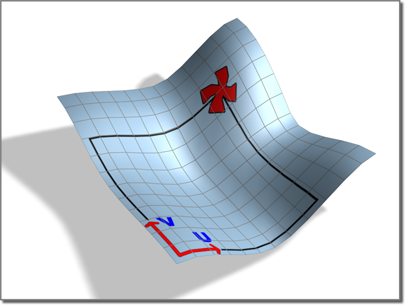Most material maps are a 2D plane assigned to a 3D surface. Consequently, the coordinate system used to describe the placement and transformation of maps is different from the X, Y, and Z axis coordinates used in 3D space. Specifically, mapping coordinates use the letters U, V, and W; the three letters preceding X, Y, and Z in the alphabet.

Local UV coordinates shown on a surface
The U, V, and W coordinates parallel the relative directions of X, Y, and Z coordinates. If you look at a 2D map image, U is the equivalent of X, and represents the horizontal direction of the map. V is the equivalent of Y, and represents the vertical direction of the map. W is the equivalent of Z and represents a direction perpendicular to the UV plane of the map.
You might question why you need a depth coordinate like W for a 2D plane. One reason is because it's sometimes useful to be able to flip the orientation of a map, relative to its geometry. To do this, you need the third coordinate. The W coordinate also has a meaning for 3-dimensional procedural materials. See also Unwrap UVW Modifier and UVW Map Modifier.